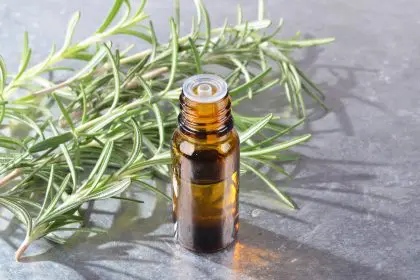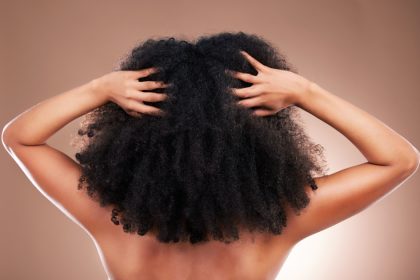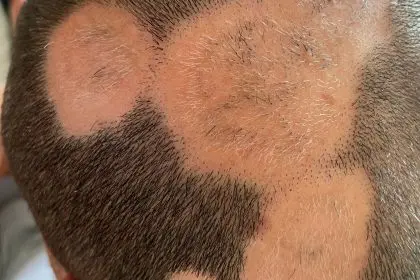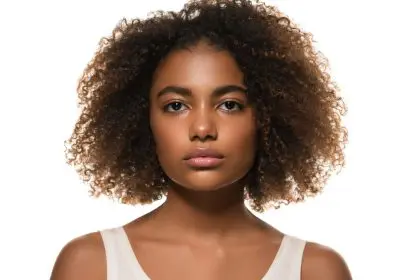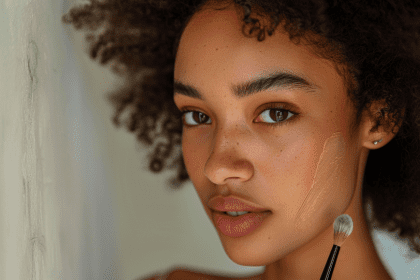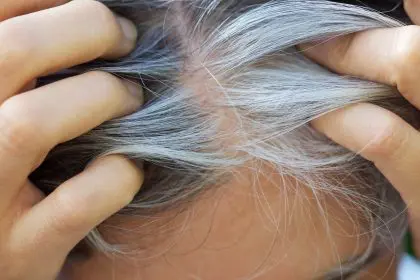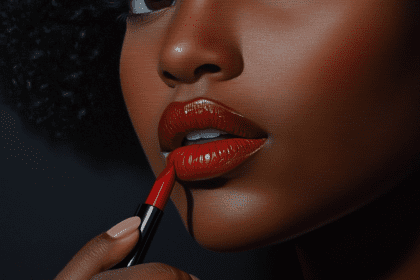For decades, concerned hair enthusiasts have passed along warnings about the supposed dangers of frequent hat-wearing. The theory that stylish headwear might accelerate balding has persisted through generations, creating anxiety among hat lovers everywhere. But does scientific evidence actually support this widely-circulated claim, or does it fall into the category of beauty folklore alongside sleeping with wet hair and brushing hair 100 strokes daily?
The scientific truth about hats and your hairline
Hair follicles, the tiny skin structures responsible for hair production, grow approximately a quarter-inch below the scalp surface. Each follicle functions as an independent mini-organ with its own blood supply, nerve connections, and growth cycle. Understanding this biological reality proves crucial when evaluating claims about external factors supposedly influencing hair loss.
The primary factor determining hair loss susceptibility involves a complex interplay between genetics, hormones, age, and overall health. Male pattern baldness, the most common form of hair loss, results from genetic sensitivity to dihydrotestosterone (DHT), a testosterone derivative. This sensitivity causes follicles to gradually shrink with each growth cycle, eventually producing increasingly finer hairs until they cease production entirely.
Female pattern hair loss follows somewhat different mechanisms but similarly depends primarily on internal factors rather than external objects touching the scalp. This fundamental understanding of hair biology immediately calls into question how a hat could significantly influence deeply-rooted biological processes occurring well beneath the skin surface.
How the hat-hair loss myth gained popularity
The persistent belief linking hats to hair loss likely originated from several convincing observations that created a false correlation. The most influential involved timing—male pattern baldness typically begins during early adulthood, precisely when many men adopt more formal attire including hats for professional settings. This coincidental timing made hats an easy target for blame.
Historical context further strengthened this misperception. During eras when daily hat-wearing was standard social practice for men, male pattern baldness remained just as prevalent as today, creating a large population of balding hat-wearers visible in everyday life. Without understanding underlying genetic factors, observers naturally connected these two common occurrences.
The temporary hair flattening experienced after removing a hat (“hat hair”) may have further reinforced this myth by creating a visual impression of reduced hair volume, which observers might interpret as permanent loss rather than temporary displacement that resolves within hours.
The 5 real ways hats interact with your hair
While hats don’t cause permanent hair loss, they do interact with hair in several scientifically verified ways that might contribute to temporary issues or exacerbate existing conditions.
- Friction can damage hair shafts but not roots
Constant friction between hat materials and hair strands, particularly with rough fabrics or tight-fitting hats, can potentially damage the hair shaft through mechanical wear. This damage manifests as breakage along the length of hairs rather than loss from the root, creating an appearance of thinning without affecting the follicles themselves.
The distinction proves critical—broken hairs will regrow normally during the next growth cycle because the follicle remains healthy. This type of damage affects hair appearance temporarily but has no impact on long-term hair growth patterns or follicle health. Smooth-lined hats and looser fits minimize this potential issue.
- Sweat buildup affects scalp health not follicle function
Hats create a microenvironment on the scalp with reduced airflow and potentially increased temperature, which can amplify sweat production. Excessive sweating without proper cleansing may lead to scalp irritation, itchiness, and flaking. While uncomfortable, these conditions affect the skin surface rather than the follicles generating new hair growth.
In extreme cases of poor hygiene, accumulated sweat could contribute to fungal or bacterial infections of the scalp. These conditions, while requiring treatment, remain separate from androgenetic alopecia (pattern baldness) and resolve without permanent hair loss once properly addressed through improved cleansing routines and appropriate medications if necessary.
- Tight hats may temporarily restrict blood flow
Extremely tight-fitting hats theoretically could compress small blood vessels in the scalp, temporarily reducing circulation to hair follicles. However, the pressure required to significantly impact blood flow would create noticeable discomfort, prompting most people to loosen or remove the hat before any meaningful circulatory restriction occurred.
Even in cases where some compression happens, the effect remains temporary and normal blood flow resumes immediately upon removing the hat. The human body also compensates for minor circulatory changes through autoregulation, further protecting against potential impacts from occasional compression. For permanent hair loss to occur, blood flow restriction would need to persist continuously for extended periods far beyond typical hat-wearing patterns.
- Trapped heat might affect hair appearance but not growth
Hats trap body heat against the scalp, potentially increasing sebum (oil) production and altering hair texture temporarily. This extra oil can make fine hair appear limper and reduce volume, creating a visual impression of thinning without affecting actual hair density or follicle function.
This cosmetic effect reverses easily through normal washing routines and has no bearing on long-term hair health or growth patterns. Some hair types actually benefit from the additional moisture retention hats provide, particularly in dry climates or during winter months when environmental factors might otherwise contribute to brittleness and breakage.
- Bacterial environment impacts scalp conditions not hair production
The warm, sometimes moist environment under frequently worn hats can create favorable conditions for bacterial growth, potentially leading to folliculitis (inflammation of hair follicles). While uncomfortable and requiring treatment, folliculitis typically resolves without permanent damage to hair-producing capabilities once proper hygiene measures address the underlying bacterial imbalance.
Regular hat cleaning, allowing the scalp to “breathe” between wearing sessions, and maintaining good overall scalp hygiene effectively mitigate these risks. Materials with antimicrobial properties or moisture-wicking capabilities can further reduce potential issues while maintaining hat-wearing habits.
When to be legitimately concerned about hair loss
Understanding the actual risk factors for hair loss helps distinguish between unfounded concerns about hat-wearing and legitimate warning signs that might warrant professional attention. Several specific conditions deserve monitoring regardless of headwear habits.
Pattern hair loss follows predictable progressions, typically beginning at the temples and crown in men and showing as overall thinning with widening part lines in women. Family history often provides the strongest predictor, with similar patterns frequently visible across generations. The gradual nature of this process distinguishes it from sudden shedding related to other causes.
Alopecia areata, an autoimmune condition, creates distinctive round patches of complete hair loss without scalp changes, appearing suddenly rather than gradually. This condition has no connection to hat-wearing and requires different treatment approaches than pattern baldness.
Telogen effluvium, characterized by sudden excessive shedding throughout the scalp, typically occurs two to three months after significant physical stress, major hormonal changes, or certain medications. This temporary condition resolves as the triggering factor subsides and new growth replaces shed hairs over several months.
Nutritional deficiencies, particularly insufficient protein, iron, zinc, and certain vitamins, can significantly impact hair growth cycles. Addressing these deficiencies through dietary changes or supplementation typically reverses associated hair thinning without requiring other interventions.
How to wear hats while maintaining hair health
For those who enjoy wearing hats for style, sun protection, or warmth, several practical strategies can minimize potential negative effects while preserving hair appearance and health.
Choosing appropriate materials makes a significant difference in hair-hat interactions. Natural, breathable fabrics like cotton allow better airflow and moisture evaporation compared to synthetic materials that might trap heat and humidity. Silk or satin linings further reduce friction, protecting hair shafts from mechanical damage during hat removal and placement.
Proper sizing prevents unnecessary pressure on the scalp while still providing secure placement. Hats should rest comfortably without creating pressure points or leaving noticeable indentation marks after removal. Adjustable styles allow customization as needed for comfort throughout the day.
Hygiene practices significantly impact scalp health for frequent hat-wearers. Regular hat cleaning prevents buildup of oils, dead skin cells, and environmental contaminants that might otherwise transfer to the scalp. Likewise, maintaining thorough scalp cleansing routines removes accumulated sebum and sweat that could potentially contribute to irritation or folliculitis.
Alternating between different hats or going hat-free periodically allows the scalp environment to normalize between wearing sessions. This practice reduces continuous pressure on any specific area and promotes normal airflow patterns across the entire scalp surface.
The psychology behind hair loss concerns
The emotional impact of hair thinning often exceeds its physical reality, explaining why myths about preventable causes gain such traction. Hair represents far more than simple biology in most cultures, carrying significant associations with youth, vitality, attractiveness, and identity.
This psychological component creates vulnerability to misinformation about controllable factors supposedly influencing hair loss. The prospect of preventing baldness through simple behavior changes like avoiding hats offers appealing perceived control over an otherwise genetically predetermined condition.
Understanding this psychological dimension helps contextualize why the hat-hair loss myth persists despite scientific evidence to the contrary. The emotional comfort of believing hair loss might be preventable through simple actions often outweighs rational evaluation of biological realities.
Evidence-based approaches to actual hair loss
While hats don’t cause permanent hair loss, legitimate concerns about thinning hair deserve attention through scientifically validated approaches rather than myth-based avoidance behaviors.
Clinically proven interventions for pattern hair loss include topical minoxidil, which extends the growth phase of hair cycles and improves follicular size and function. This over-the-counter treatment works for both men and women, showing visible results after consistent application for several months.
Prescription options include finasteride for men, which blocks conversion of testosterone to DHT, reducing the hormone primarily responsible for follicle miniaturization in male pattern baldness. Newer options like low-level laser therapy devices provide additional treatment avenues with varying degrees of supporting evidence.
Advanced procedures for established hair loss include hair transplantation, which relocates follicles from areas resistant to balding (typically the back and sides of the scalp) to thinning regions. Modern techniques create natural-appearing results by transplanting individual follicular units rather than larger plugs used in earlier approaches.
Emerging therapies including platelet-rich plasma injections, stem cell treatments, and JAK inhibitors represent the frontier of hair restoration technology, though evidence supporting their efficacy continues evolving through ongoing research.
The verdict: Enjoy your hats without worry
The scientific consensus remains clear—wearing hats does not cause permanent hair loss or accelerate genetic balding patterns. The deeply-rooted biological processes determining hair growth occur well beneath the skin surface, largely unaffected by external objects resting on the scalp.
While certain hat-wearing practices might temporarily affect hair appearance or potentially contribute to scalp conditions requiring attention, these issues remain distinct from true hair loss and resolve readily with appropriate care adjustments. Understanding this distinction frees hat enthusiasts to enjoy their preferred styles without unfounded concerns about long-term hair consequences.
For those experiencing actual hair thinning, focusing on evidence-based interventions appropriate to the specific cause will yield better results than misplaced concern about headwear choices. Consulting healthcare providers about significant changes in hair patterns provides the most reliable path to effective management strategies based on individual circumstances.
Ultimately, the persistence of the hat-hair loss myth demonstrates how easily correlation becomes misinterpreted as causation, particularly regarding conditions with strong emotional significance. Critical evaluation of such claims against biological fundamentals provides the best protection against unnecessary restrictions based on misinformation.


